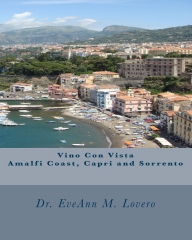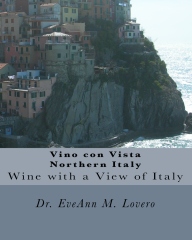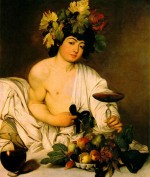
If you have been watching Emily in Paris on Netflix, you have seen many of these amazing tourist attractions in Paris. The Banks of the Seine River are brimming with a succession of Masterpieces. In 1991 it became a UNESCO World Heritage Site. https://whc.unesco.org/en/list/600/
“Outstanding Universal Value
Brief synthesis
The city of Paris is built along a bend in the River Seine, between the confluence of the Marne and the Oise Rivers. The property comprises bridges, quays and the banks of the Seine in the historic part of its course (between the Pont de Sully and the Pont d’Iéna) and the Ile de la Cité and the Ile St Louis. The mastery of the architecture and town planning along the river is evident in the articulation of the Ile de la Cité and Ile St Louis with its banks, the creation of North-South thoroughfares, the installations along the river course, the construction of quays and the channeling of the river. The ensemble, regarded as a geographical and historical entity, forms an exceptional and unique example of urban riverside architecture, where the different layers of the history of Paris, the capital city of one of the first great nation states of Europe, are harmoniously superposed.
From the Ile St Louis to the Pont Neuf, from the Louvre to the Eiffel Tower, and the Place de la Concorde to the Grand and Petit Palais, the evolution of Paris and its history can be seen from the River Seine. A large number of major monuments of the French capital are built alongside the river and on the perspectives overlooking it. The Cathedral of Notre-Dame and the Sainte Chapelle are architectural masterpieces of the Middle Ages; the Pont Neuf illustrates the spirit of French Renaissance; the coherence of the districts of the Marais and the Ile-Saint-Louis testify to Parisian town planning of the 17th and 18th centuries; finally, the banks of the river comprise the most masterful constructions of French classicism, with the Palais de Louvre, the Invalides, the Ecole Militaire and the Monnaie (the Mint). The conserved buildings of the Universal Exhibitions that took place in Paris in the 19th and 20th centuries are numerous on the banks of the River Seine. Heading the list is the Eiffel Tower, a universally recognized icon of Paris and of iron architecture. The Ile Saint Louis, the Quai Malaquais and the Quai Voltaire offer examples of coherent architectural and urban ensembles, with very significant examples of Parisian construction of the 17th and 18th centuries. The large squares and avenues built by Haussmann at the time of Napoleon III have influenced town planning throughout the world.” UNESCO
From the Pont de Sully, next door to the Institut du Monde Arabe, through to the Pont d’Iéna by the Eiffel Tower, take off on a stroll along the banks of the Seine and journey back through 900 years of Paris history.
Rapidly understood as a major defensive and economic asset, the Seine contributed considerably to the rise of the capital: as can be witnessed by the monuments dotting both its banks.
Much of the river banks are now reserved for pedestrians only, so you can stroll undisturbed while admiring the Seine and its bridges and take advantage of the unique perspective of some architectural treasures: Notre-Dame Cathedral, the Palais du Louvre, the Institut de France, the Hôtel des Invalides, the Place de la Concorde, the École Militaire, the Monnaie de Paris, the Grand Palais, the Eiffel Tower, the Palais de Chaillot… not forgetting the Île Saint-Louis and Île de la Cité.
The Paris region is home to five UNESCO World Heritage sites. These extraordinary landmarks, range from fabulous avant-garde monuments to river banks and merchant cities.
Château de Versailles: the pomp of an absolute monarchy
Considered a masterpiece of human creative genius, the Château de Versailles, with its 2,300 rooms, is a monument to the glory of the Sun King. Louis XIV transformed this hunting pavilion into a royal residence that matched his ambitions, making it a seat for his absolute monarchy.
The greatest talents of the era were summoned to build it, including the architect Le Vau, the painter Le Brun and the landscape gardener Le Nôtre, who created the sublime French-style gardens. Besides the wide range of visiting options, the Versailles estate also hosts a rich programme throughout the year of shows, concerts and balls.
Notably, during the warmer months, its fountains are filled with water for the Musical Fountain and the Night Fountain shows.

Le Corbusier, at the heart of avant-garde architecture
The visionary architect Le Corbusier (1887-1965) revolutionised the way we conceive our living spaces. And a trip around Paris and its region can provide a unique glimpse into the exceptional work of this pioneering modern architect.
A good place to start is the Maison La Roche in Paris, Le Corbusier’s oldest building, constructed in 1923.
Another essential stop can be found west of the capital, in Poissy, at the Villa Savoye : built as a weekend home, it is an icon of modernist architecture with its stilts, terrace roof and horizontal windows. In southern Paris, a prototype room is open to the public at the Swiss Pavilion at the Cité Internationale Universitaire, allowing visitors a glimpse into Le Corbusier’s vision for collective living.
True fans can also head to the Porte Molitor apartment block which includes a studio-apartment where the architect painted.

It’s a good time to start planning your trip to Paris. These are some of the sites that you want to visit.

The Hôtel des Invalides pictured above was commissioned in 1670 by Louis XIV in order to provide accommodation and hospital care for wounded soldiers.

The chapel of the Invalides was built at the end of the 17th century by Jules-Hardouin Mansart and contains Napoleon’s tomb below the dome of the Invalides.
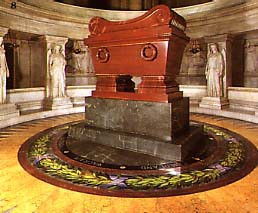


Paris is packed with amazing sites like the Hotel des Invalides, the Eiffel Tower, the Louvre Museum and plenty of amazing churches and art museums. I took an amazing Vino con Vista Seine River Boat Tour from Paris to the Normandy Beaches and visited all of the stops on the map above.
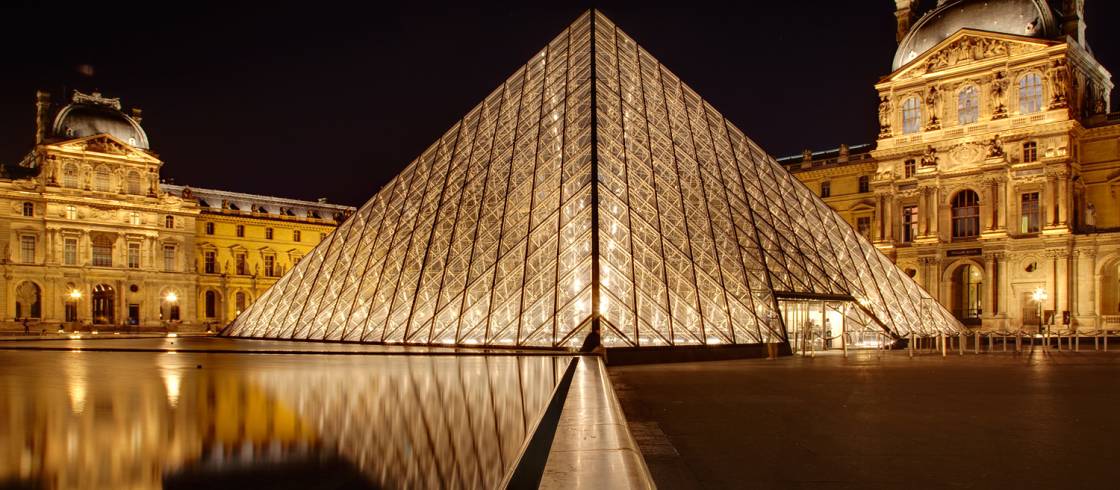
 Hotel des Invalides
Hotel des Invalides Tour Eiffel, view from the Trocadero
Tour Eiffel, view from the TrocaderoThe Seine River has played both a defensive and an economic role in this development of the magnificent and historic city. The river forks in central Paris creating two islands: the Ile de la Cité and the Ile Saint-Louis.


It is the most-visited city in the world. Paris is the capital of France and big decisions are made at the Elysee Palace where the president lives.

The Opera Garnier is one of the most opulent buildings in Paris.

As a global fashion hub and culinary mecca of haute-cuisine, there are plenty of Michelin restaurants with well-dressed patrons.
Paris has so many exciting sights to see including: the Place de la Concorde Square, Place Vendome, The Opera Garnier, Champs-Elysees, Arc de Triomphe, Trocadero, Invalides, Notre Dame Cathedral, the Montparnesse neighborhood and Place du Chatelet. You can visit the Grand Gallerie at the Jardin des Plantes if you are an animal lover.
There are 500 green spaces to relax and people watch. The Luxembourg Gardens is one of largest open spaces in Paris. Many of the most interesting monuments are illuminated at night and there is a dazzling light show at the Eiffel Tower.

Photo by Pixabay on Pexels.com
It’s relatively easy and inexpensive to get around using the 380 Metro Stations; so get a 24 hour Ticket Mobilis for unlimited trips. I also recommend the Paris Pass for discounted entry into many of the museums and monuments listed in this post. The pass includes a “Batuaux Parisiens” hour-long cruise on the River. and a pass to the 56th floor of Montparnasse Tower where you can have an incredible Vino con Vista.
Since I love to scope out destinations where you can find a spectacular Vino con Vista, Paris ranks at the top of my list with magnificent chateaux and cathedrals and great public buildings. I like to stroll along either the left or right bank of the Seine because it is flanked by historic cafes and monumental architecture.
France is wine country. Since I am always searching for a Vino con Vista, I’m thrilled that Champagne is produced close to Paris. I found out that there is a winery in Montmartre. The Clos Montmartre is planted on a steep slope, which we know vines and wine-bloggers adore! At Rue des Saules and Rue Saint Vincent, you’ll need to arrange a visit to Clos Montmartre with the Montmartre tourist office near the Dali Museum. The tour is free but you must pay for the tasting. Clos is the oldest working vineyard in Paris. During Fête des Vendanges, the annual harvest festival, the grapes from the Clos are transported to the Montmartre Town Hall to be fermented and bottled into Gamay and Pinot Noir wine.
Check out the Wine Museum and tour the former limestone quarries that were mined between the 13th and 18th centuries to supply Paris with building materials. In the 16th and 17th centuries, the Friars of Passy Monastary used the vaulted cellars to store their wine. the extensive collection of wine-related objects (2200) items pays tribute to wine-makers, cellar masters, oenologists and coopers. Dine in the restaurant or try a blind-tasting with the resident expert.





Stained-glass art with Bacchus
The Seine River has historically been a lucrative trading route and made Paris a prosperous city even in the days of the Roman Empire. Ancient Greeks introduced wine to France and the Romans spread viticulture across the land. The Seine helped the French transport their liquid gold.

Photo by Flickr on Pexels.com
Paris has developed continuously between the 16th and 20th centuries and is one of the largest population centers in Europe with 12 million inhabitants.

Photo by Flickr on Pexels.com
 detail of a street lamp in Paris, Avenue des Champs Elysées (Photo credit: Wikipedia)
detail of a street lamp in Paris, Avenue des Champs Elysées (Photo credit: Wikipedia)Paris lies 277 miles from the mouth of the navigable, slow- moving River. On this trip I took a fantastic River Boat cruise on AMA Waterways. Oak Farm Vineyards in Lodi California was well represented on the ship.The wine-maker, Chad Joseph and the owner, Dan Panella offered numerous wine seminars and tastings of their award-winning wines during the cruise.
To learn more about Oak Farm:
https://www.oakfarmvineyards.com/
AMA offers many Wine Cruises with a dedicated wine host and enriching shore excursions to local wineries and private cellars. Here’s a list of some of the river cruises that I may consider in the future:
Austria’s Wachau Valley
France’s Bordeaux and Cotes du Rhone regions
Portugal’s Port wine country in the Douro Valley
Germany’s Rheingau, Franconia and Moselle regions
Here’s a link to their official site: https://www.amawaterways.com
Paris has many famous landmarks along the Seine River including: Notre Dame, the Louvre, the Eiffel Tower and the Musée d’Orsay. You can cruise on tour boats or the hop on hop off boats. In the evening, take a tour along the Seine River to witness the “City of Light” and gaze at the illuminated buildings, monuments and bridges of Paris.

Photo by Pixabay on Pexels.com
In Paris, there are many beautiful bridges that cross the Seine. The oldest bridge is the Pont Neuf which means “new bridge”. It was completed in 1607 under Henry IV. The newest bridge is the Pont Charles de Gaulle that was completed in 1996. The closest metro station is Pont Neuf. I love the elaborate Alexandre III bridge. The Pont Alexandre III is a deck arch bridge that spans the Seine in Paris. It connects the Champs-Élysées quarter with Invalides and Eiffel.

I also love the Statue of Liberty Bridge.

Here are some of my favorite sites in Paris:
- The Avenue des Champs-Elysées (the name refers to the ‘Elysian Fields’ where happy souls dwelt after death according to Greek myth) links the place de la Concorde with the Arc de Triomphe. It is arguably one of the world’s most famous streets and is one of the most expensive strips of real estate in the world. The Avenue has symbolized the style and joie de vivre of Paris since the mid-19th century. Enjoy a three-course meal and a glass of wine at one of the charming cafes overlooking the Arc de Triomphe on the Champs-Elysees, .
At the bottom of Avenue des Champs-Elysées, there is an 11.8 ft tall bronze statue depicting General Charles de Gaulle in full military gear. He looks like he is ready to march down the broad avenue to the Arc de Triomphe in a liberated Paris on August 26, 1944.
The Avenue is known for its theaters, cafés, and luxury shops. There is an annual Bastille Day military parade, and it is where the Tour de France cycle race ends. There are plenty of shops, restaurants and hotels.

Photo by Pixabay on Pexels.com
Throughout history, the Avenue has been the site of military parades. There were victory parades of German troops in 1871 and again in 1940 celebrating the Fall of France on July 14, 1940. These parades were certainly not celebrated by the locals.

Photo by Pixabay on Pexels.com
 English: Street sign of the Avenue des Champs-Élysées in the , France. (Photo credit: Wikipedia)
English: Street sign of the Avenue des Champs-Élysées in the , France. (Photo credit: Wikipedia)2. The Arc de Triomphe was erected by Napoleon in 1806 as a memorial to a great army in 1836. The Arc de Triomphe de l’Étoile lies at the étoile or “star” of the juncture formed by its twelve radiating avenues. Inspired by the Arch of Titus in Rome, the Arc de Triomphe has an overall height of 164 feet, width of 148 feet, and depth of 72 feet.
There was the Paris victory parade in 1919 marking the end of hostilities in World War I. Buy a ticket and climb to the top for a great view!

Facade of Centre Georges Pompidou by Daniela Ruiz on Pexels.com
3. Centre Georges Pompidou opened in 1977 as a contemporary art museum. The exterior is covered with water pipes, air ducts and electricity vents. Street performers entertain visitors on the square in front of the museum.
The National Museum of Modern Art occupies the top three floors and is the largest museum for modern art in Europe. It was designed in the style of high-tech architecture by the architectural team of Richard Rogers and Renzo Piano, along with Gianfranco Franchini. The project was awarded to this team in an architectural design competition. The results were announced in 1971. The sculpture Horizontal by Alexander Calder was placed in front of the Centre Pompidou in 2012.

Photo by Monica Quiroz on Pexels.com
4. The French Baroque Les Invalides L’Hôtel national des Invalides: The National Residence of the Invalids and Napoleon’s Tomb is a complex of buildings containing artifacts, arms and armor and monuments related to French military history. There is a hospital and a retirement home for war veterans, the building’s original purpose.
The buildings house the Musée de l’Armée, the military museum of the Army of France, the Musée des Plans-Reliefs, and the Musée d’Histoire Contemporaine, as well as the burial site for some of France’s war heroes, notably Napoleon Bonaparte.
Louis XIV initiated the project by an order dated November 24, 1670, as a home and hospital for aged and unwell soldiers: the name is a shortened form of hôpital des invalides. Shortly after the veterans’ chapel was completed, Louis XIV commissioned Mansart to construct a separate private royal chapel referred to as the Église du Dôme. The domed chapel was finished in 1708.
Because of its location and significance, the Invalides served as the scene for several key events in French history. On July 14, 1789 it was stormed by Parisian rioters who seized the cannons and muskets stored in its cellars to use against the Bastille later that day. Napoleon was entombed under the dome of the Invalides with a monumental ceremony in 1840.
 The Arc de Triomphe (Arch of Triumph), at the center of the place Charles de Gaulle, Paris. (Photo credit: Wikipedia)
The Arc de Triomphe (Arch of Triumph), at the center of the place Charles de Gaulle, Paris. (Photo credit: Wikipedia)5. Musee du Louvre dates back to the 13th century. It was originally built as a fortress for Philippe Auguste. Remnants of the fortress are visible in the basement of the museum. Due to the urban expansion of the city, the fortress eventually lost its defensive function and in 1546 it was converted by Francis I into the main residence of the French Kings.
The Louvre is the largest palace in the world that has been converted into the world’s largest art museum. There are seven centuries of painting from the 13th century to the 19th century with 400,000 works of art including Leonardo da Vinci’s Mona Lisa. The most famous works from antiquity include the Seated Scribe, the Jewels of Rameses II, and the arm-less duo of the Winged Victory of Samothrace and the Venus de Milo. From the Renaissance period you can admire Michelangelo’s Slaves, Mona Lisa and works by Raphael, Botticelli, and Titian. French masterpieces of the 19th century include Ingres’ La Grande Odalisque, Géricault’s The Raft of the Medusa, and the work of David and Delacroix.




The museum opened on August 10, 1793 with an exhibition of 537 paintings. The majority of the works where owned by the royalty or confiscated from the church. Because of structural problems with the building, the museum was closed in 1796 until 1801.
The collection was increased under Napoleon and the museum was renamed Musée Napoléon. After Napoleon’s abdication, many of the works that were seized by his armies were returned to their original owners. The collection was further increased during the reigns of Louis XVIII and Charles X.


6. The Louve Pyramid is amazing.

Photo by Sam Walker on Pexels.com
Architect I. M. Pei was awarded the project and proposed a glass pyramid to stand over a new entrance in the main court, the Cour Napoléon.

Make sure you get tickets before you go to the Louvre to avoid waiting in very long lines!
7. Tour Eiffel : On Quai Branly, face au Pont D’Iena, you will find a magnificent iron lattice tower that was built by Gustave Eiffel for the 1889 World Fair. It was held to commemorate the centennial of the Revolution.
The Eiffel Tower was the world’s tallest structure at 1,050 feet until Manhattan’s Chrysler Building was completed. Initially opposed by Paris’ artistic and literary elite, the Eiffel Tower was almost torn down in 1909. The tower’s salvation came when it proved an ideal platform for the antennas needed for the new science of radiotelegraphy. Today, the highlight of a visit are the amazing views over Paris. The Eiffel Tower is the most-visited paid monument in the world and 6.91 million people ascended it in 2015. The tower has three levels for visitors, with restaurants on the first and second levels. You can get to the top by elevator or climb 704 steps to the 2nd level.

8. Notre Dame “Our Lady of Paris“: En face du 25 rue d’Arcole
If Paris has a heart, then this is it. The cathedral of Notre Dame stands at the tip of the Ile de la Cite and was started in 1163. It is a masterpiece of French Gothic architecture. It has been a Catholic Parisian ceremonial focal point for seven centuries and served as the coronation headquarters for Napoleon I and Pope Pius VII. The cathedral treasury contains a reliquary, which houses some of Catholicism’s most important relics, including the purported Crown of Thorns, a fragment of the True Cross, and one of the Holy Nails. The crown of thorns were originally at Sainte-Chapelle.



The cathedral’s immense interior is 426 feet long, 164 feet wide and 115 feet high. A marvel of medieval engineering, it holds over 9000 people and has spectacular rose windows. The interior is dominated by a 7,800-pipe organ that was restored but has not worked properly since the restoration.
There are a trio of main entrances that are each shaped differently. Above the arches there are ornate statues called The Gallery of the Kings; the 28 statues represent the kings of Israel and Judaea. You can climb 387 steps of the north tower for a spectacular view of Paris. This will bring you to the top of the west facade and face to face with many of the cathedral’s most frightening gargoyles.
Notre Dame is located on the Ile de la Cité, an island in the middle of the Seine River. It is close to many of the main attractions of Paris and is easily reached by foot. You can also take the metro line 4 to Cité.
9. Musée d’Orsay has an incredible collection of Impressionist art in a beautiful Beaux-Arts train station that has been converted into a museum.

Photo by Nanzui Palomino on Pexels.com
The museum holds mainly French art dating from 1848 to 1914, including paintings, sculptures, furniture, and photography.
It houses the largest collection of impressionist and post-Impressionist masterpieces in the world, by painters including Monet, Manet, Degas, Renoir, Cézanne, Seurat, Sisley, Gauguin, and Van Gogh. Many of these works were held at the Galerie nationale du Jeu de Paume prior to the museum’s opening in 1986. It is one of the largest art museums in Europe.
10. Montmartre is a large hill in Paris’s 18th arrondissement. It is 430 feet high and gives its name to the surrounding district. Montmartre has been a setting for several hit movies so you can get tickets for the “Movie Tour”.
The area has a nightclub district and the famous Moulin Rouge cabaret that inspired Toulouse-Lautrec’s distinctive style of painting.

Henri de Toulouse-Lautrec, Self-portrait in the crowd, At the Moulin Rouge, 1892 Art Institute of Chicago
At the top of Montmartre, visit the glorious Sacré-Cœur Basilica. The Basilica of the Sacred Heart of Paris. The basilica is located at the summit of the butteMontmartre, the highest point in the city.
Sacré-Cœur is a double monument, political and cultural, both a national penance for the defeat of France in the 1870 Franco-Prussian War and the socialist Paris Commune of 1871. The basilica was designed by Paul Abadie. Construction began in 1875 and was completed in 1914. The basilica was consecrated after the end of World War I in 1919. Climb 234 steps up a narrow spiral staircase to the dome where you can obtain one of Paris’ most spectacular panoramas. Instead of walking up the hill, take the tram. I learned that lesson the hard way!

Photo by Pixabay on Pexels.com
Many artists had studios or worked in or around Montmartre, including Amedeo Modigliani, Claude Monet, Pierre-Auguste Renoir, Edgar Degas, Henri de Toulouse-Lautrec, Suzanne Valadon, Piet Mondrian, Pablo Picasso, Camille Pissarro, and Vincent van Gogh. I like the Salvador Dali Museum (Espace Dali) at Montmartre. Espace Dali presents the only permanent exhibition in France devoted to the master of Surrealism with 300 works of art including: melted clocks, Alice in Wonderland, Romeo and Juliet and the Mae West Lips Sofa.
Montmartre is primarily known for its artistic history and the white-domed Basilica. There is also an church on the hill, Saint Pierre de Montmartre. This is where the Jesuit order of priests was founded.
11. Sainte Chapelle was built for Louis IX to contain the relic of the crown of thorns, one of the most important relics in medieval Christendom. This exquisite Gothic Holy Chapel was built around 1238 and consecrated on April 26, 1248.

Saint Louis

Sainte-Chapelle: 14th Century Apostle adorns a pillar



Sainte-Chapelle
Sainte-Chapelle is considered among the highest achievements of the Rayonnant period of Gothic architecture. Climb the spiral staircase to the upper chapel. On each pillar, there is a 14th century statue of an Apostle. The magnificent 13th century stained glass windows contain 1134 scenes.

Photo by Pixabay on Pexels.com
12. Get a combined ticket in advance for the Chapel and the Consiergerie to avoid long lines. The Consiergerie was a gothic Palace of the medieval French Kings.



It became one of the principle places of detention during the French Revolution and Marie Antoinette was the most famous prisoner.

13. Saint-Germain-des-Prés is one of the four administrative quarters of the 6th arrondissement of Paris. It is located around the oldest church in Paris, the former Abbey of Saint-Germain-des-Prés. Visit the Saint Germain des Pres Church and Abbey. Here are some important facts about this Church:
Saint Germain des Pres is one of the oldest Romanesque churches in France.

King Childebert I founded the abbey in 558AD. He built Saint-Vincent-Sainte-Croix Basilica, as the abbey church was then called, on the ruins of a Roman temple. Its initial purpose was to shelter a piece of the True Cross and Tunic of Saint-Vincent, (the Patron Saint of Wine-growers) that the king brought back from Spain.
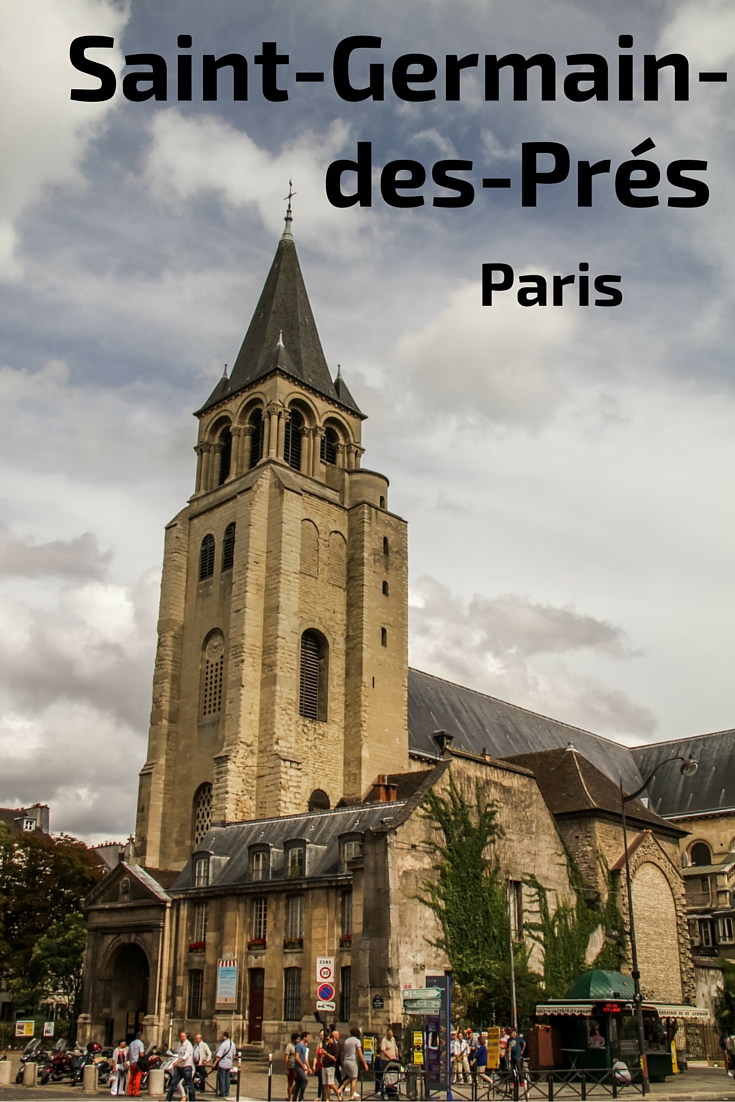
The first bishop, Germanus, dedicated the basilica on December 23, 558AD, the very same day Childebert died. The abbey was renamed Saint-Germain in 754AD in order to pay tribute to the bishop, who was buried in the chancel. It became known as Saint-Germain-des-Prés in order to differentiate it from Saint-Germain-le-Vieux on the Ile de la Cité.
All Merovingian kings were buried in the church until the 7th century, when Dagobert I founded the Abbey of Saint-Denis in the north of Paris. The Normans destroyed the abbey when they besieged Paris in 885-886AD.
The residents of the this part of Paris are known as Germanopratins. The quarter has several famous cafés, including Les Deux Magots, Café de Flore, le Procope, and the Brasserie Lipp. For a spectacular Vino con Vista, sit at Les Deux Magots at 6 place Saint-Germain-des-Pres and gaze at the oldest church in Paris.


Some of the other interesting attractions in this neighborhood include: the École des Beaux-Arts, the famed school of fine arts, and the Musée national Eugène Delacroix, in the former apartment and studio of painter Eugène Delacroix.
In the 1940s and 1950s, it was the center of the existentialist movement associated with Jean-Paul Sartre and Simone de Beauvoir.
14. Where to stay: My absolute favorite hotel in Paris is the Four Seasons Hotel George V. This art-deco landmark was built in 1928 and is nestled in the Golden Triangle of Paris, just off the historic Champs-Elysees. It is considered one of the most prestigious hotels in Paris and even one of the most luxurious in the world! Find three of the best restaurants in Paris under one roof.

Facade of the George V Hotel
For a special treat, use your points for an oversized suites with Eiffel Tower views. This is Paris’ finest dining destination! where you can indulge in some of the finest restaurants in Paris! There are three restaurants that have collected a total of five Michelin stars among them: Le Cinq, Le George and L’Orangerie. Check out the intimate bars and legendary wine cellar.

Bar at George V in Paris

“The third Michelin star for Le Cinq for the second consecutive year rewards the very essence of today’s cuisine. We strive to continuously evolve our style and techniques to instill an emotional connection with our guests.” Christian Le Squer Chef, Le Cinq
There is an amazing new spa, an elegant swimming pool and a courtyard for your Vino con Vista. Order some amazing wine from their wine cellar.

Here’s the link For the hotel: https://www.fourseasons.com/paris/

Le George Ravioli

Appetizer at Le George
For this trip, I used my points for a Junior Suite at the magnificent Marriott on the Champs-Elysees.
Here’s the link: https://www.marriott.com/hotels/travel/pardt-paris-marriott-champs-elysees-hotel/
Meet me at Cafe Fouquet’s on the Champs-Elysees where I’ll be blogging from this historic destination at www.vinoconvistablog.me

Cafe Fouquet’s
Do you need some restaurant reservations?
https://www.decanter.com/wine-travel/american-express/best-paris-restaurants-2018-wine-395610/

Arch of Triumph
Related articles
















